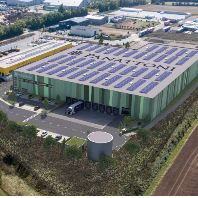The growing office vacancy level has become a more and more severe problem in the Baltics as a result of recent excessive construction activity and, on the other hand, decreased business volumes in line with the economic downturn on the global, regional and local levels as well as subsequent massive lay-offs. Despite the strong long-term development potential, currently Baltic capitals suffer from an oversupply of office floor space.
During the first half of 2009, the market saw the fastest-ever fall of rentals in all three Baltic capitals, exceeding 30% drop in only 6 months. However, at the end of that period, rents stabilized and are expected to bottom out in the second half of the year.
At the end of the second quarter the vacancy rate in the Vilnius office market has reached 20%, which is a dramatic increase compared to 1-3% level seen in 2006-2008. The vacancy rate was somewhat lower in Class-A buildings, i.e. 16%, whereas in Class-B buildings it stood at 24% level. Totally these figures represent nearly 60,000 m² of vacant modern offices floor space in the city. In addition to around 50,000 m² already brought this year, another 70,000 m² are expected to enter the market by the end of the year, three quarters thereof being in speculative projects and poorly pre-let.
Office owners and developers in Riga contend with letting difficulties as well. In terms of new constructions the most active year was 2008, when over 100,000 m² were added to the market. However, all recent projects struggle with poor occupancy, often not exceeding 50% of the total lettable floor space. The majority of this year's projects were finished in H1 2009, totally amounting to 80,000 m². Such noticeable delivery will prolong the absorption period and increase the total vacancy rate to over 15% in Riga in 2009.
The Tallinn office market is not an exception with forecasted average vacancy levels of 14% in 2009. Nevertheless, CBD is doing better as a result of recently lower construction activity and rather limited supply in this area. In general, construction activity has slowed down as all ongoing projects are virtually completed, only some internal fit-out works are left. Totally, around 50,000 m² are expected to be brought to the market in 2009, whereas the pipeline for 2010 and later on has dried out.
Nevertheless, the trend of increasing office vacancies is about to change by the end of the year, as the major wave of lay-offs is, expectedly, already behind in Lithuania and Latvia. However in Estonia a new Labour Law came into force on 1 July 2009, allowing easier procedure of laying-off employees. Inevitably, the labor market will suffer consequently affecting the property market.
Gloomy moods in the occupancy market are also reflected in the property investment market. Although the gap between the sellers and purchasers yield expectations has narrowed during the latter quarter, this trend did not help to conclude more transactions. However, potential investors maintain a sharp eye on the market.
"Despite a number of risks that are still present in the Baltics, investors who are active in the market are mainly targeted to properties having various up-sides and are expecting to conclude transactions at a distressed property price levels," - points out Rièardas Èepas, Re&Solution Group's CEO.
Source: Re&Solution






